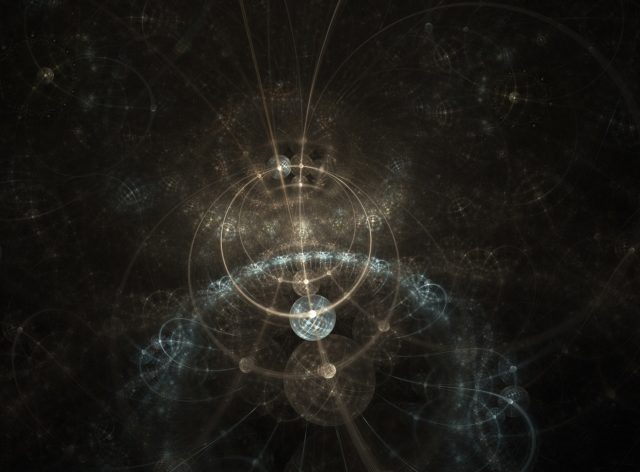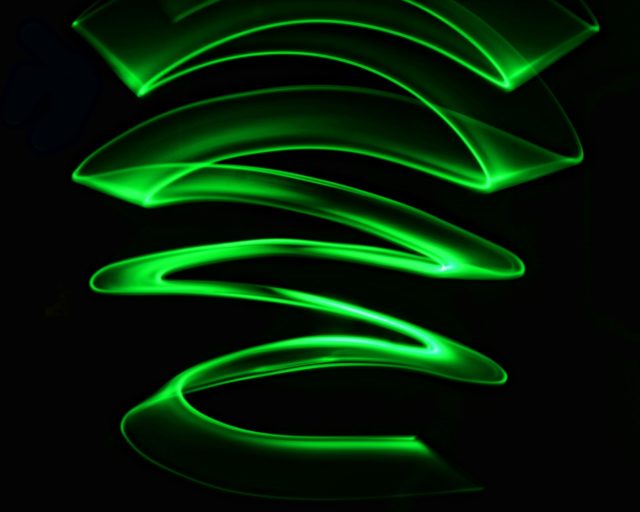The road to quantum gravity (4): The flow of time for massive objects

We started this series discussing the basic ingredients of the Universe: events, spacetime, causality. In the last chapter, we introduced massive objects (and thus, matter), which appear as a generalization of the so-called photon box.
As it moves, any object traces a path. Physicists call it worldline. We established that a massive object never moves faster than light, so there are three types of trajectories in Spacetime, which receive adjectives:
-
Time-like, if it moves slower than light (as massive objects do).
-
Light-like, if it moves exactly at the speed of light (as massless particles do).
-
Space-like, if the speed is faster than light (which is impossible for all).
From another perspective, understood as a 4-dimensional entity, an object actually is its worldline. Then these distinctions are about different directions that a worldline can take within Spacetime. Descriptions in terms of speed are just easier for us, because we are used to perceiving a flow of time, but it is important to be careful about that.
The emergence of Time
The flow of time we perceive, pragmatically speaking, depends fundamentally on motion. As mentioned before, time can seemingly flow faster or slower depending on the observer. In fact, the faster a clock moves relative to you, the slower it appears to tick.
Taking this to the extreme, a clock moving at the speed of light would appear frozen. This is because particles moving at the speed of light experience no time. Let us explain this by going back to the division of Spacetime into three regions presented in Part 2, which was based on the idea that causality determines the distinction between past and future. Now notice that if you move at the fastest speed possible, nothing can ever reach you, so there is no “past” region. Additionally, you cannot communicate anything anywhere, because by the time your causal influence arrives, you are already there as well. Thus there is no future either. From a massless particle’s perspective, all of Spacetime is space.
The familiar smooth flow of time emerges as these massless particles are bound in what we think of as material objects, which move slower than the speed of light. This is why time happens for the atom in a way that it does not for the atom’s massless components. Having mass and experiencing time are fundamentally connected.
The photon clock
In order to visualize more easily how time emerges and flows faster or slower, let us consider a simpler version of the photon box: the photon clock 1 .
Imagine two perfect mirror walls with a single photon bouncing between them. This would act as a clock because the speed of light is the same for all observers and they all agree on events too, such as those instances when the photon bounces off a wall. They can be used to define the clock’s ticks.
When the clock is static, the photon bounces up and down in a regular pattern. But if it moves sideways, the photon has to move horizontally as well as vertically, thus covering more distance but at the same speed (because the speed of light is the same always), which makes the clock tick more slowly.
From your point of view, that is. Any observer riding along with this clock would see it ticking at the normal rate and bizarrely, see your own static clock ticking more slowly because it is moving relative to them. This is the pragmatic, practical way in which time dilation happens. Indeed, as we already stated in Part 1, time is not a fundamental universal quantity, each observer measures their own time.
The Lorentz transformation 2 relates the way time changes from the moving observers’ perspectives. From the 4-dimensional perspective, though, both of the clocks’ worldlines have time-like trajectories in different directions in Spacetime, where no direction is preferred over another. The Lorentz transformation simply places different time and space axes in a mathematical diagram of Spacetime, corresponding to each observer’s subjective distinction of time and space.
Notice that the internal photon of the clock still travels in fixed directions in Spacetime (either left or right) due to the invariance of the speed of light, and as it bounces between the walls, these inner paths look like zig-zag trajectories 3.

The photon clock is an analogy for something real. We already covered the fact that real matter is comprised of massless light-speed components confined, not by imaginary walls, but by interactions with other particles and force fields. This is an interpretation we can take even for the most elementary components of the atom, which behave like the photon clock. In fact, the most accurate clocks in the world, atomic clocks, are physical realizations of its basic description.
The connection between mass and time
Just like a photon clock confines a bouncing light-like worldline, any massive object can be seen as an extremely complex ensemble of light-like worldlines confined in equally complex ways. But it is only the ensemble that can travel slower than light, or be still. Its most elementary parts cannot do that and keep traveling at light speed in zig-zag trajectories.
Concepts like stillness, mass, and time only make sense when taking together the evolving arrangement of many light-like paths 4, which are a manifestation of an object’s internal machinery of interactions among particles. At each interaction, particles exchange energy, charge and other properties that result in change in those particles. As a result, the configuration of the ensemble changes too.
The ordered sequence of causes and effects transmitted by massless particles can be thought of as a series of light-like segments propagating causal connections at exactly the speed of light between infinitesimally nearby bits of the Universe. From this fundamental picture emerges another, which involves massive objects that change over time and transmit signals traveling slower than the speed of light.
A note of caution is important, though. We are using an analogy in which the clock ticks become interactions among internal parts of atoms. In doing so, we are extrapolating the validity of these light-like segments into microscopic distances. The zig-zagging light rays description is still a meaningful and useful description of reality, but quantum physics makes it more complex.
How exactly? We leave that for another entry in the series. Before that, we will look at how the ideas presented here apply to black holes. But for now, this is what the relative flow of time is all about.
References
- M. von Laue, “Die nordströmsche gravitationstheorie”, Jahrbuch der Radioaktivität und Elektronik 14, 263 (1917) ↩
- H. Lorentz, “Electromagnetic phenomena in a system moving with any velocity smaller than that of light”, Proceedings of the Royal Netherlands Academy of Arts and Sciences, 6: 809–831 (1904) ↩
- R. F. Marzke & J. A. Wheeler, “Gravitation as geometry. I: The geometry of space-time and the geometrodynamical standard meter”, in Gravitation and Relativity, ed. W. A. Benjamin, Inc., New York, pp. 40–64 (1964) ↩
- G. J. Whitrow, “The natural philosophy of time”, ed. Nelson, London and Edinburgh, pp. xi, 324 (1961) ↩
1 comment
[…] Non sortzen da denbora? Zer zerikusi du masarekin? Daniel Fernándezen The road to quantum gravity (4): The flow of time for massive objects […]